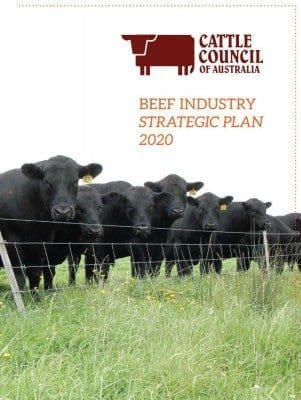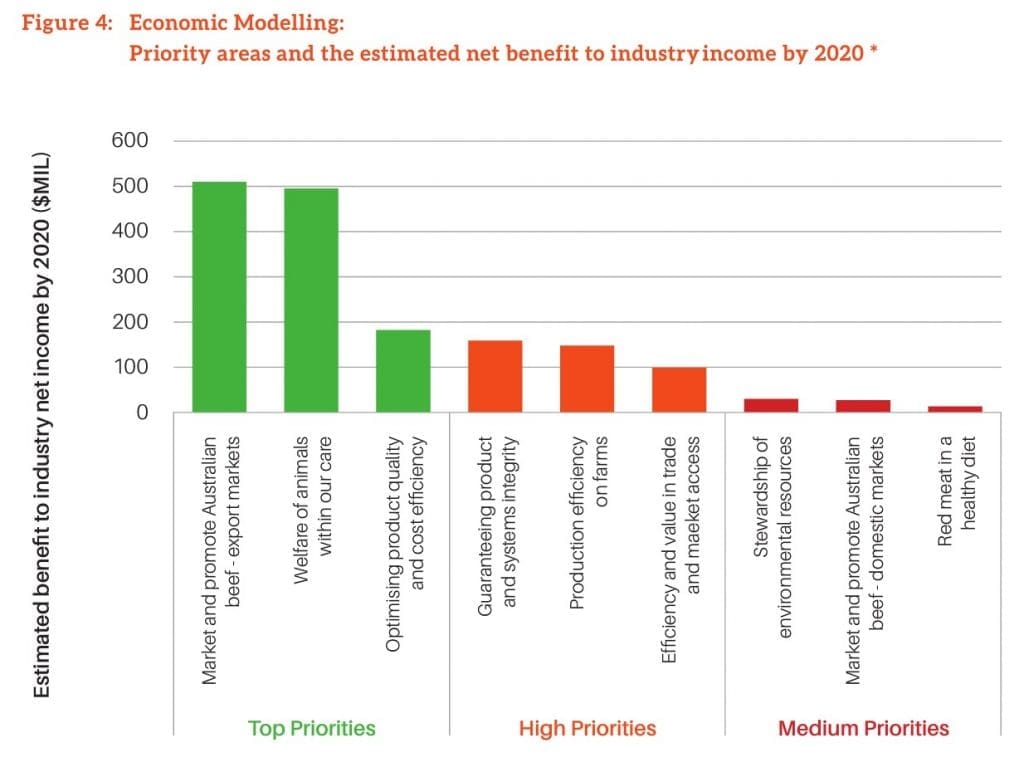 Where should the finite resources of the Australian grassfed cattle industry be spent to generate the highest benefits?
Where should the finite resources of the Australian grassfed cattle industry be spent to generate the highest benefits?
A comprehensive new strategy document released by Cattle Council of Australia today details where the industry believes it can get the best bang for its levy-funded bucks in the next five years.
The Grassfed Beef Industry Strategic Plan 2020 (BISP 2020) draws on the results of consultation with grassfed levy payers and industry stakeholders and economic modeling and analysis.
It is, in effect, the beef industry’s response to the wider Meat Industry Strategic Plan 2020 (MISP 2010), released by RMAC last year.
BISP 2020 will help to guide the resources of Cattle Council of Australia and the levy-funded industry service organisations Meat & Livestock Australia, Animal Health Australia and the National Residue Service for the next five years.
The new strategy is founded on the premise that the grassfed beef industry has a bright future, but opportunities will not simply happen. If Australia’s beef industry is strengthen its competitive position and improve the profitability of its participants, it must embrace change and innovation, and, more specifically, accelerate the move towards customer-focused value chains.
Accelerating the shift towards ‘value chain thinking’
Two phrases appear regularly in the document which capture the central focus of the industry’s plan: ‘fit-for-purpose’ beef production and ‘value based marketing’.
Encouraging the creation of more branded value-chains geared towards meeting precise consumer quality expectations and rewarding participating producers with premium returns is at the core of the industry’s five-year strategic plan.
CCA president Howard Smith says “value-chain thinking” is the key to the industry’s future.
“It means incorporating the needs of consumers at every step from the dinner plate through to the farm gate,” Mr Smith explains in the document.
“It will help increase transparency along the value chain, bring greater opportunities for producers to gain premiums and foster the collaboration we know is needed to drive our industry forward.”
Building on that focus, the plan identifies 10 priority areas for future investment (see chart below), including four “top priority” areas:
- Building industry capability (Developing skills and leaders and improving industry structures and service organisations);
- Improving animal welfare;
- Marketing and promoting Australian beef into export markets; and
- Optimising product quality and cost efficiency.
So what will success look like?
If the plan achieves its aims, outcomes by 2020 should include (more detail on expected outcomes in full document):
- A greater number of skilled industry leaders;
- More beef being sold through customer-focused, collaborative value chains, where the benefits are shared by all participating businesses in the value chain;
- More Australian beef exports differentiated from competitor products to maximise returns and attract premiums;
- More flourishing commercial brands;
- An increased number of producers aligned with branded beef product programs;
- More flexible and accountable industry representative bodies, that are more focused on a few high priority issues rather than spreading efforts thinly;
- A new national cattle producer’s body in place;
- Maintained and improved consumer and community confidence in Australian beef and its production practices;
- Agreed animal welfare indicators in place and monitored;
- Evidence of improving industry performance against a baseline for environmental and natural resource management issues;
- Improved trade and technical market access;
- Premiums being paid by domestic consumers for beef products relative to competing proteins;
- Widespread application of existing R&D knowledge;
- Productivity gains concentrated in areas that improve efficiency and producer profitability, not driven by a strategy of competing on a lowest cost-basis;
- More producers receiving timely, reliable signals from the value chain that reflect real value differences for their cattle, based on objective measures of preferred attributes;
- Improved beef language specification that aligns with end user requirements in place; and
- Reliable information flowing rapidly up and down the value chain,
Scorecards for CCA and MLA
The document identifies several Key Performance Indicators (KPI) to measure progress.
One of the first tasks the document recommends is early investment to establish baselines so the industry’s progress on each KPI can be measured and its performance evaluated over time.
As part of this process, the document suggests that the MLA and CCA should provide a BISP2020 scorecard at their annual general meetings for the next five years, showing the extent to which resources and efforts have been allocated towards each priority area and the progress made.
Industry must ‘refocus’ its efforts
Mr Smith said the plan outlines a vision to “refocus” industry efforts and resources to strengthen Australia’s competitive position as a trusted source of premium quality products.
He said it will require a fundamental shift in mindset and practices by industry businesses towards value chains – or, incorporating the needs of consumers from paddock to plate.
The plan reveals an expected benefit of $389 million to industry net income by 2020 in developing export markets alone.
A key aim is to increase on-farm production efficiency by 0.5 per cent in northern Australia and 1.75 per cent in southern Australia by 2020 through new research.
“With the success of the strategy dependent on strong leadership and collaboration across the value chain, Cattle Council has positioned itself to be on the front foot and lead by example.
“We are committed to play a leading role in this process,’’ Mr Smith said.
To access the Grassfed Beef Industry Strategic Plan 2020, visit http://e-doc.me/cattlecouncil1

